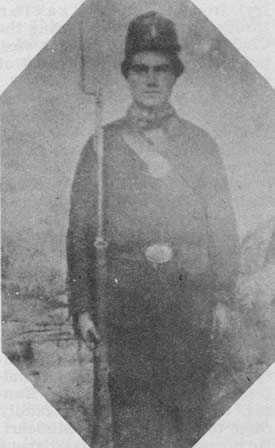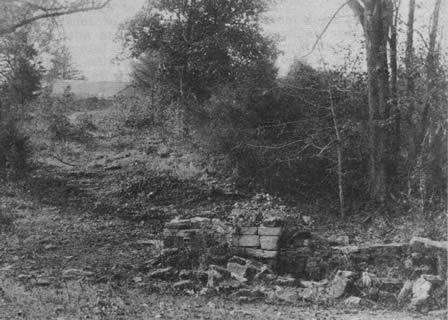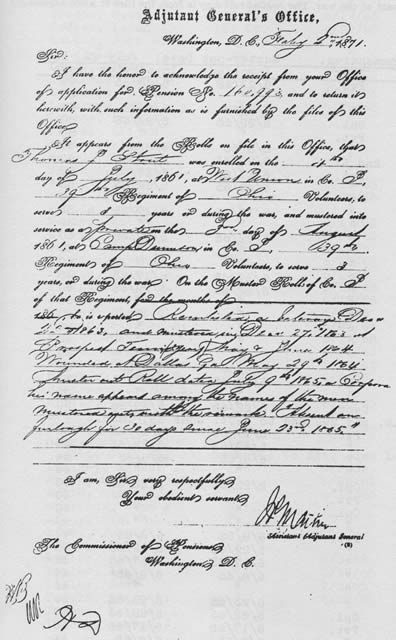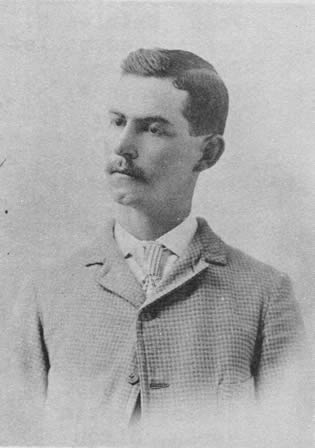Volume 1, Number 5 - Fall 1962
The Stout Family
Dr Roy Stout
A treaty was signed at Greenville in Ohio territory on August 3, 1795, which ended Indian warfare in Ohio and opened up the extensive territory between the Great Lakes and the Ohio River for settlement. Settlers poured in from nearby states and increased the white population from about 3,000 in 1790 to over 45,000 in 1800. Among the emigrants was an ancestor of Mr. Roy Stout of Forsyth, Missouri.
It has taken hard work and a lot of patience, but we have found records and files on our family which date back to the Revolutionary War. Due to court house fires, the information was hard to obtain. The following are some notes taken from the meager sources to which we have access.
In 1796, Obadiah Stout, a native of New Jersey and a veteran of the Revolutionary War, moved from Graham's Station in Kentucky to Ohio to become the first white settler in Greene Township. He settled with his family on the east of Puntenney's Fork of Stout's Run. Obadiah had ten children of which the two younger sons, Obadiah and John, had been scalped by Indians, while the family lived at Graham's Station.
The same year the family moved to Ohio, Obadiah, Jr., a grand son of Obadiah, Sr., was born, the first white child to be born in Greene Township.
Soon after the Stouts moved to Ohio, several other families came to the neighborhood, among them William Hamilton. Mr. Hamilton was the father-in-law of Obadiah, Sr., and taught the first school in the township.
Another member of the Stout family, Isaac, also played a part in a "first" in the history of Greene Township: he was the subject of the township's first indictment.
"United States VS. Isaac Stout. On their oaths present that Isaac Stout, on or about the thirteenth day of March in the year of our Lord one thousand seven hundred and ninety eight, at and within the County Aforesaid did for the sake of lucre and gain, vend and retail a less quantity than two gallons of a certain formented liquor, commonly cider, not being licensed or qualified Agreeable to law for retailing and vending, and vending the same to the evil example of all others."The Defendant pleads guilty. It is therefore considered by the Court that the Plaintiff recover against said Defendant one cent damage and costs taxed to the sum of _____ Dollars."
William Stout, son of Obadiah, Sr., was born on Stout's Run in Greene Township in 1806, three years after Ohio was admitted as a state. In 1835, he founded the village of Rome near the site of the old town of Adamsville. From Mr. Robert L. Rogers, present postmaster at Stout, Ohio, we learn, "The town name is Rome, the postoffice being established before the town was called Stout because William Stout was the first Postmaster. There is another Rome Postoffice in Ohio, therefore this one carries the name of Stout."
The wife of William Stout was the daughter of Jonathan Wait and was born in Adams County in 1811. Besides being postmaster at Rome, William sold goods there until his death in 1859.
His son, Elisha Pinkney Stout, was born in Greene Township, Adams County, April 5, 1837. Adams County is located across the Ohio River from Kentucky and is about 50 miles east of Cincinnati. Elisha received such education as the common schools afforded, and in 1854 he went west to Ft. Council Bluffs, Iowa. In October, 1854, he took part in establishing the city of Omaha, Nebraska. Two years later he was elected as a member of the Territorial Legislature of Nebraska and took his seat therein on January 3, 1857.
One winter's legislature experience was sufficient for him, and he moved on with six other men to the Pike's Peak region after gold was discovered there. He and his party arrived at what is now Denver on October 20, 1858. Denver, as a city, was founded by the Denver Town Company November 17, 1858, and five days later Mr. Stout was elected president and a director of the company. His canvas roofed log cabin was built on the site later occupied by the city hall. He is remembered in Denver now as the man for whom Stout Street was named.

Thomas Jefferson Stout
Cpl. Stout served from 4 July 1861 to 9 July 1865 in the 39th Reg., Ohio Volunteers. In his claim for invalid pension he was described as "5 feet 7 inches high, has dark hair and complexion and brown eyes." The claim continues, "That while in the service aforesaid, and in the line of his duty, in an engagement between the United States and rebel forces, he was shot by a Whitemoth (?) rifle ball in the neck, back of the right ear, the ball coursing downward and coming out at the neck under the chin." The wound did not heal properly and eventually was the cause of his death. For his disability, Cpl. Stout received a pension of $2 a month.
Hall, Frank, History of Colorado, The Blakely Printing Co., Chicago, 1895, Vol. IV.
[17]
Elisha returned to Ohio in 1861 and was regimental sutler of the 91st O.V.I. (Ohio Volunteer Infantry) from its organization throughout its service during the Civil War. He later became vice- president and acting president of the Cincinnati Savings Society.
My grandfather, Thomas Jefferson Stout, was born in Adams County, Ohio, in 1842. He served all through the Civil War, or until he was wounded while with Sherman on his march through Georgia. General Sherman began his march from Chattanooga to Atlanta in May, 1864. Near Dallas, Georgia, about a month later, Corporal Stout was shot through the neck. After being hospitalized at Marietta, Georgia, he was mustered out July 9, 1865.
After his marriage to Nancy Piland in Louis County, Kentucky, November 1, 1865, Grand father moved to Lawrence, Kansas. In 1872, he and his family came to Taney County, Missouri. He homesteaded some land about four miles north of Taneyville and built his home in a hollow near a large spring. The rock wall, built of rock he cut himself and placed around the spring, still remains.
Jefferson Stout was a master of his trade of stonemason. Besides the spring wall, much of his work remains to be seen today. He was an artist in fireplaces and he would cut and design the rock for beauty and balance. The old chimney which stood for years just north of Taneyville was a landmark before it was torn down a few years ago. Around many of the old cemeteries you will find his work as tombstones and caskets cut from native stone. Some are in the Helphrey Cemetery north of Taneyville. Grandfather thought the cotton rock here would hold its color and not tarnish but, to his disappointment, he found this was not so. His old rock quarry still remains on the hill just south of the old home place.
The Stout home was In the Helphrey Community, in what was called Happy Hollow. The phone line which was installed was called the Happy Hollow Line. The Hires family lived just east of the Stouts in the same hollow.
Jefferson Stout was a firm believer in law and order, and was a Justice of the Peace. He was very much interested in the welfare of the community and took an active part in trying to improve it. He was responsible for organizing the first church and Sunday school in the old log school and church house which once stood in the Helphrey Cemetery.
His death, at 41, was caused by complications from the neck
wound he received in the Civil War. His children who survived him at the time
of his death in 1883 were:
Benj. F., born July 17, 1868
Lulu, born Sept. 9, 1869
Thos. B., born April 24, 1871
Wilber, born Oct. 6, 1872
Roena, born Jan 29, 1874
Louis E., born Mar. 31, 1875
Robert, born Mar. 16, 1879
Mary W., born Oct. 31, 1880
Emma, born Jun. 29, 1882
Jefferson, born Nov. 13, 1883
One of the sons, Louis E., or Ed, was editor of the newspaper, Stout's Weekly, published at Colmesneil, Texas, and was also a lawyer at that time. There is only one of Grandfather's children living now, Mrs. Emma Baker of St. John, Kansas. She has given me much information about her parents.
My father, Thomas Bert Stout, had a drugstore and barber shop which he operated from 1896 to 1898. They were in what was called the old Flat Top building In Taneyville. He and Alva Wilson burnt lime and hauled it to Forsyth to build the first School of the Ozarks. The lime sold for twenty-five cents per bushel. The records show this was in 1904.
I have - some notes taken from the old ledger my father kept:
Prices in Drug Store, 1896
Hair cut and shave 30 cents
Pipe and tobacco 15 cents
Perfume 10 cents
Stationery 15 cents
Cigars 5 cents
Labor in 1904 One-half day with team 75 cents
Eight cord of wood . $8.00 (This would have been equal to 24 ricks).
My Grandfather and Grandmother Stout are buried in the Helphrey Cemetery and the grass has been growing on their graves for a long time. Sleeping beside them are my Father and Mother. Helphrey is a quaint little cemetery and in the quietness, it seems as if the past speaks in a still voice.

Land homesteaded by Thomas J. Stout in 1878 near Taneyville. The photo, made from a recently discovered glass negative, shows the walled-in spring and in the background the Stout home.
[18]

Sir:
I have the honor to acknowledge the receipt from your office of application for Pension No. 160,998, and to return it herewith, with such information as is furnished by the files of this Office.
It appears from the Rolls on file in this Office, that Thomas J. Stout was enrolled on the 4th day of July, 1861, at West Union in Co. I, 39th Regiment of Ohio Volunteers, to serve 3 years or during the war, and mustered into service as a private on the 3rd day of August 1861, at Camp Dunnison (?) in Co. I, 39th Regiment of Ohio Volunteers, to serve 3 years, or during the war. On the Muster Rolls of Co. I of that Regiment, he is reported Reenlisted a veteran Decr. 22, 1863, and mustered in Decr. 27, 1863 at Prospect, Tenn; (3 years) (7). May and June 1864 Wounded at Dallas, Ga., May 29th, 1864. Muster out Roll dated July 9th, 1865, a Corporal, his name appears among the names of the men mustered out with the remark "Absent on furlough for 30 days since June 23rd, 1865."
I am, Sir, very respectfully,
Your obedient servant
/s/ J. R. Martin
Assistant Adjutant General The Commissioner of Pensions,
Washington, D. C.

Thomas Bert Stout 1892
[19]
This volume: Next Article | Table of Contents | Other Issues
Other Volumes | Keyword Search | White River Valley Quarterly Home | Local History Home
Copyright © White River Valley Historical Quarterly

